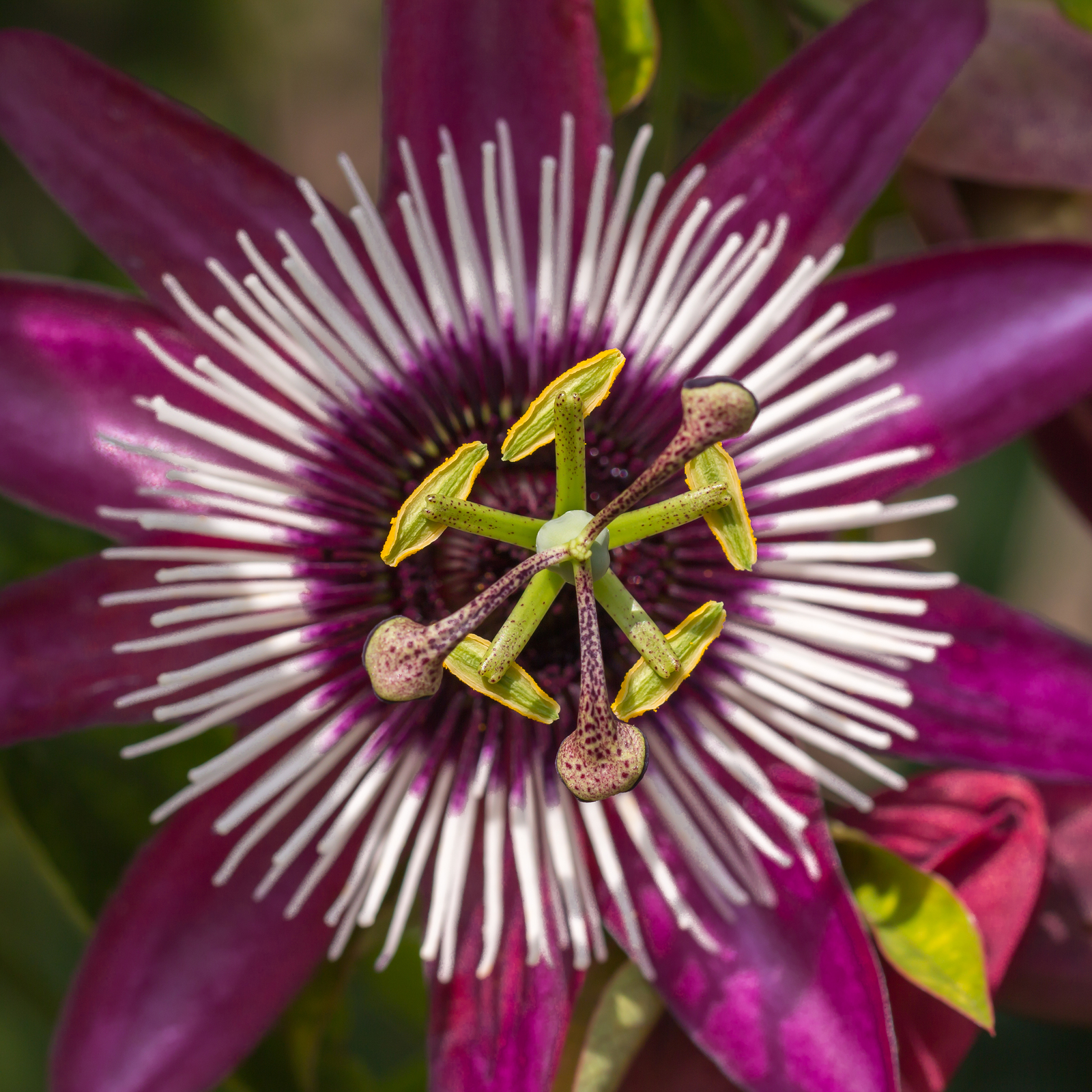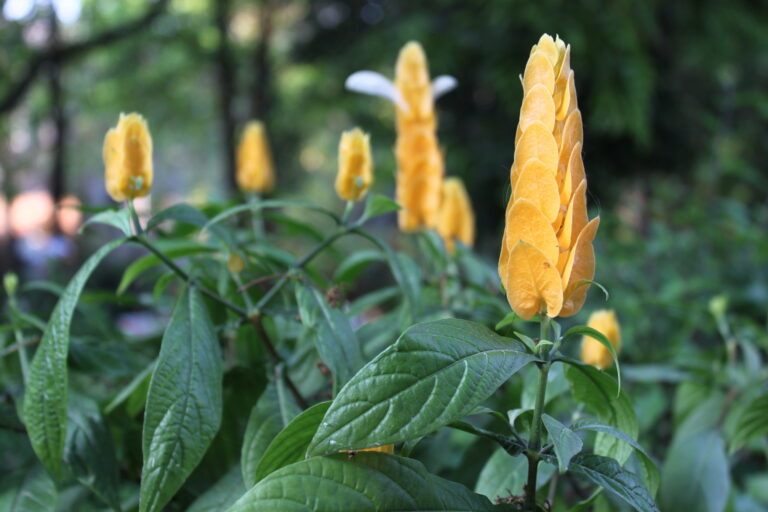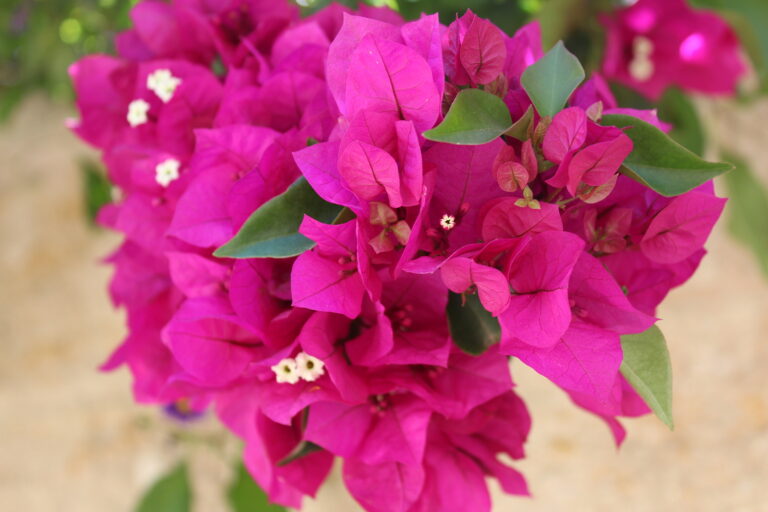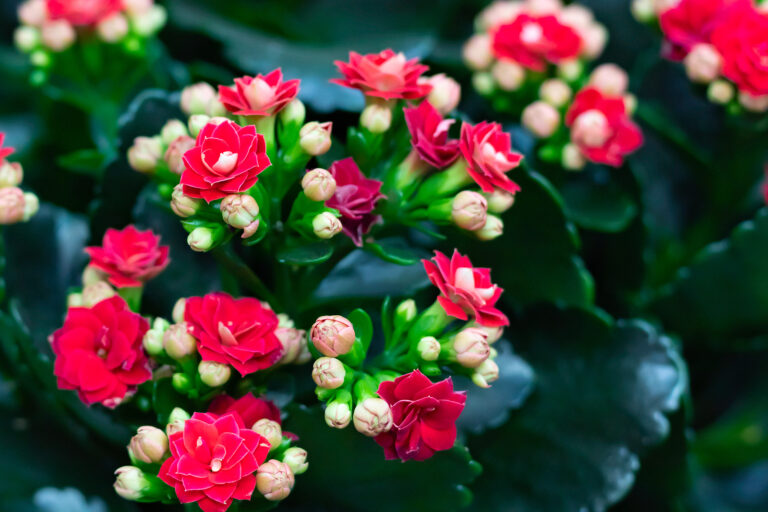How to Grow Passiflora — Passionflower
Passiflora–commonly called passionflowers–are grown for their large, showy, fringed flowers. They often bloom in rare shades of blue, and some are scented. Passionflowers also produce edible fruit.
Passiflora quickly covers arbors, pergolas, fences, and garden structures with lush, glossy foliage.
Several species of Passiflora can be grown as houseplants. Indoors passionflower must be trained on a trellis, wire-hoop, or other support.
Get to know Passiflora
- Plant type: Evergreen or deciduous flowering vine
- Growing Zones and range: 7-10; grows best when temperatures are 60°F (16°C)
- Hardiness: Passionflower dies to the ground during winter in the cooler parts of its range but returns in spring
- Height and width: 15 to 20 feet (4.5-6m) tall and wide; plants can grow 6 to 10 feet (1.8-3m) indoors.
- Foliage: Leaves have three or more deep lobes
- Flowers: Intricate white, purple, red, and blue flowers; flowers have 10 outer petals; an odd-shaped tubular structure protrudes from the center of the flower and is surrounded by several rings of thin, fringed filaments.
- Bloom time: Bloom almost continuously in warm weather. Blooms last just one day, but plants bloom over a long period.
- Uses: Covering fences and arbors, screening, erosion control, covering sunny bare spots, accent
- Common name: Passionflower, maypop
- Botanical name: Passiflora spp.
- Family: Passifloraceae
- Origin: Tropical North, Central and South America
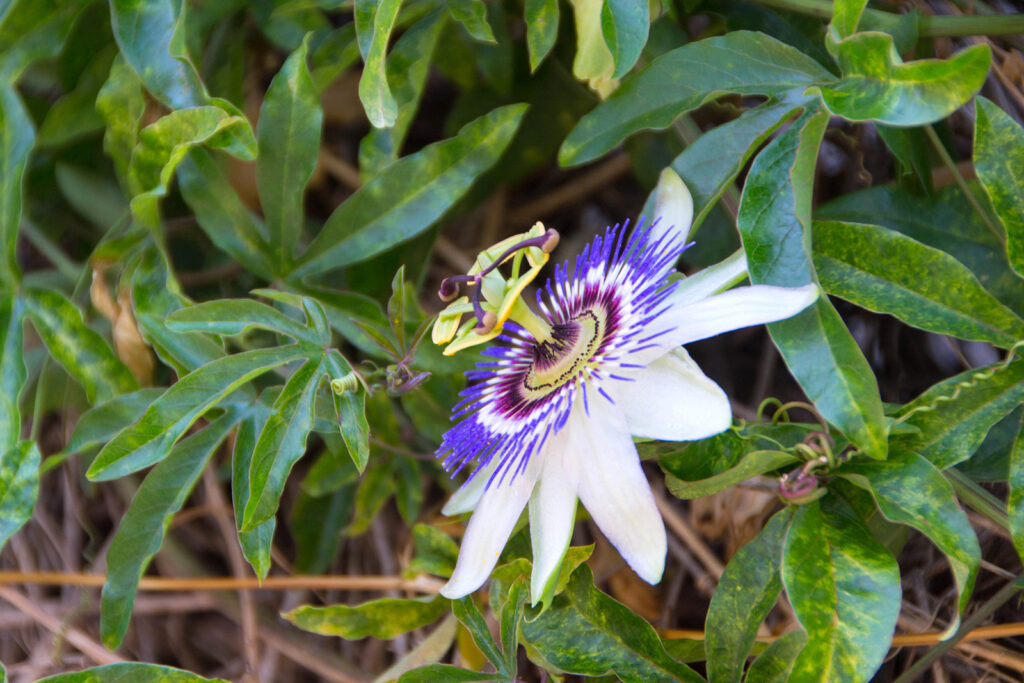
Where to plant Passiflora
- Passiflora grows best in full; grow in partial shade in very hot regions; grows best with at least 4 hours of sun
- Plant Passiflora in any well-drained soil. Indoors, plant passionflower in an all-purpose mix; replace the top 1-2 inches (2.5-5cm) of soil every year.
When to plant Passiflora
- Set container-grown Passiflora outdoors in spring; it can grow indoors as a houseplant year-round
Planting and spacing Passiflora
- Space Passiflora 15 to 20 feet (4.5-6m) apart.
How to water and feed Passiflora
- Water Passiflora regularly. Keep the soil moist while plants are actively growing; reduce watering slightly in fall and winter.
- Fertilize Passiflora twice a month from spring to late summer with an all-purpose fertilizer.
Passiflora care
- Provide support—trellis, fencing, or string—for vines to climb, or let the plants spread as a groundcover.
- Prune as needed to keep this vigorous vine within bounds.
- If plants don’t get enough light, their buds will wilt and drop before opening.
- To produce fruits, most passionflowers must be hand-pollinated; use a small artist’s brush to transfer the powdery pollen from the downward-facing, narrow, yellow anthers to the tips of the stigmas. (The stigmas are at the end of the three-part structure in the very center of the flower.)
Growing Passiflora as a houseplant
- Passiflora x alato-caerulea, P. caerulea, P. coccinea, P. edulis, and P. fasciata can be grown as houseplants.
- Passiflora prefers average to warm temperatures, direct light, and average humidity.
- Grow Passiflora in a well-drained, soilless medium and keep it constantly moist during the growing and flowering period. At other times, allow the medium to dry slightly between waterings.
- Fertilize twice a month during the growing and flowering period.
- After the vine has flowered, cut it back to 6 inches high.
- Passiflora must be trained on a trellis, wire hoop, or other support.
Passiflora pests and diseases
- Passiflora is susceptible to attack by mealybugs, scale insects and root-knot nematode.
- Passiflora is susceptible to leaf spot.
Passiflora propagation
- Take Passiflora stem cuttings at any time, or grow new plants from seed.
Passiflora varieties to grow
- Passiflora x alatocaerulea, orchid passionflower, is one of the longest bloomers with 4-inch (10cm) flowers in a blend of purple, white, and pink fragrant pink petals with a fringed crown of purple, blue, and white; three lobed leaves.
- P. caerulea, blue passionflower. Gray-green leaves 4 to 5 inches across with five to nine deep lobs; has 4-inch blue, hot pink, and white fragrant flowers and grows to 30 feet (9m) tall. Cultivars include ‘Grandiflora’ has 5 to 6 inch flowers; ‘Constance Elliot’ has white flowers.
- P. coccinea, scarlet passionflower, has 3-inch red flowers with filaments that are deep purple or pink; 3 to 6 inch oval leaves; grows 30 feet in all directions.
- P. edulis, purple granadilla. Three-lobed 4 to 6 inche leaves with wavy edges; a woody climber
- P. trifasciata. Satiny olive green to deep bronze leaves with broad pink and silvery zonesl flowers are yellow and fragrant.

